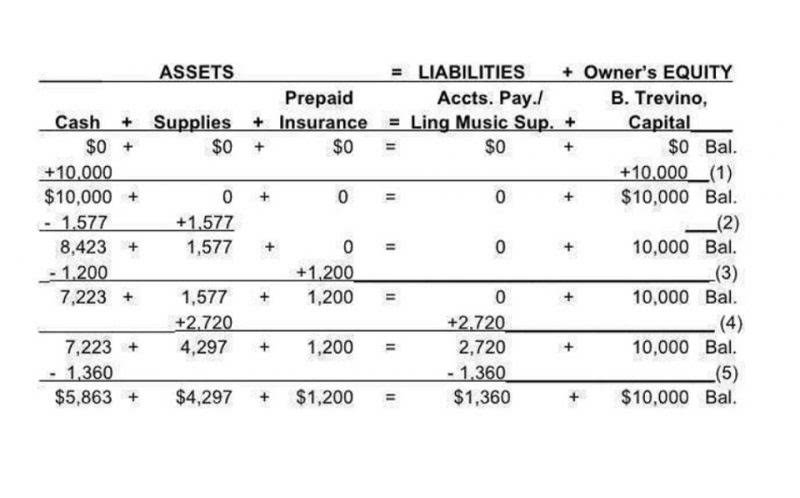If the company sells 8,000 units in January and 2,000 units in February, the COGS for January should be calculated based on the 8,000 units sold, not the 10,000 units produced. Robust bookkeeping proves your ability to manage finances effectively and generate consistent profits. It also inspires confidence and trust in investors, making your brand a more attractive proposition. Bookstime The consequences of CPG accounting mismanagement include missed opportunities, strained supplier relationships, and even difficulty paying employees. From basic compilations for internal analysis to comprehensive audits for financing purposes, CJBS provides crucial financial documentation. These documents are not just transactional in nature but are also a rich source of insights for strategic decision-making throughout the year.
Process Solutions
For example, a sales change affects accounts receivable and cash flow performance. You can use your COA to create customized reports that streamline analysis and decision-making. Inaccurate COGS can lead to mispriced products, shrinking margins, and poor financial visibility, which makes it difficult to identify where profits are lost or how to adjust pricing to maintain profitability.
Why is Accounting Critical for CPG Brands?

During tough economic times, consumers may spend extra on consumer packaged goods in place of more expensive luxuries. During the economic downturn from the 2008 recession, sales of nail polish went up as consumers “splurged” on at-home nail treatments instead of pricey salon manicures. In 2009, though consumer spending on cosmetics overall declined, nail polish sales grew by 14.3%. Although CPG makers generally enjoy healthy margins and robust balance sheets, they must continuously fight for shelf space in stores. Even well-known companies must continuously invest in advertising in an ongoing effort to increase brand recognition and stimulate sales. Consumer packaged goods are items used daily by average consumers that need to be replaced or replenished regularly.
How To Audit Your PO Process: Tips to Save Time

With this attitude of reexamining the status quo and reimagining it from a blank slate, CPG companies can embrace change and develop radical new ways to do business—and gain value in the process. The potential efficiencies enabled by ERP systems can be directly linked to the value that CPG companies can realize from investing in the ERP system and its surrounding applications. The end goal of this investment is to optimize processes that, cpg accounting when redesigned, will generate the most value for the companies. Rather than simply moving all existing processes—both good and bad—onto the new S/4HANA platform, CPG companies can target specific value pools for process redesign, simplification, and standardization. This will allow them to maximize the utility of their ERP solution and their IT system overall.

Next: Creating a Financial Business Model
CPG companies can harmonize and simplify their nondifferentiating processes in areas such asHR, finance, sales, and supply-chain management to align with their ERP solution’s standards. These cost pressures are only expected to increase as consumers demand healthy products, personalization, and ultraconvenience—and as small brands continue to succeed, capturing most CPG growth. But sub-par financial accounting practices won’t only make handling your finances harder to run your company today — they’ll also impact your ability to grow and thrive in the future. Below, we’ll look at some of the best practices CPG companies should use to set themselves up for success. Hiring a consultant specializing in CPG accounting and procurement can offer valuable insights into best practices and industry trends. Next, establish clear communication channels between your accounting and procurement teams to ensure that everyone is on the same page regarding budgets and spending.
What Are Consumer Packaged Goods (CPG)?
- They are sold in individual packages at varying price points, depending on the brand’s position in the market.
- However, the investment in learning pays off in boosted efficiency and ease of use long term.
- As such, sales returns and allowance accounts should be established and maintained to properly reflect expected sales, COGS, inventory, and accounts receivable within the period on both the P&L and Balance Sheet.
- Lower relative net margins could be another problem if companies are relying on expensive capital for funding.
- Update accrual estimates based on actual business performance to reflect the most accurate financial position.
- Discover insights from the Settle x DTC Experts panel on alternative financing, cash flow management, and profitability strategies from the founders of HigherDose and Mockingbird.
The name originates in their packaging, which traditionally is easily recognizable wrapping that consumers can quickly identify on store shelves. The piece of the puzzle that makes these an area for further review is timing. These adjustments are made after the sale balance sheet of the original goods and are based on volume and activity that is not known at the initial time of sale. While QBO offers many benefits, it’s important to be aware of its drawbacks for CPG companies.
